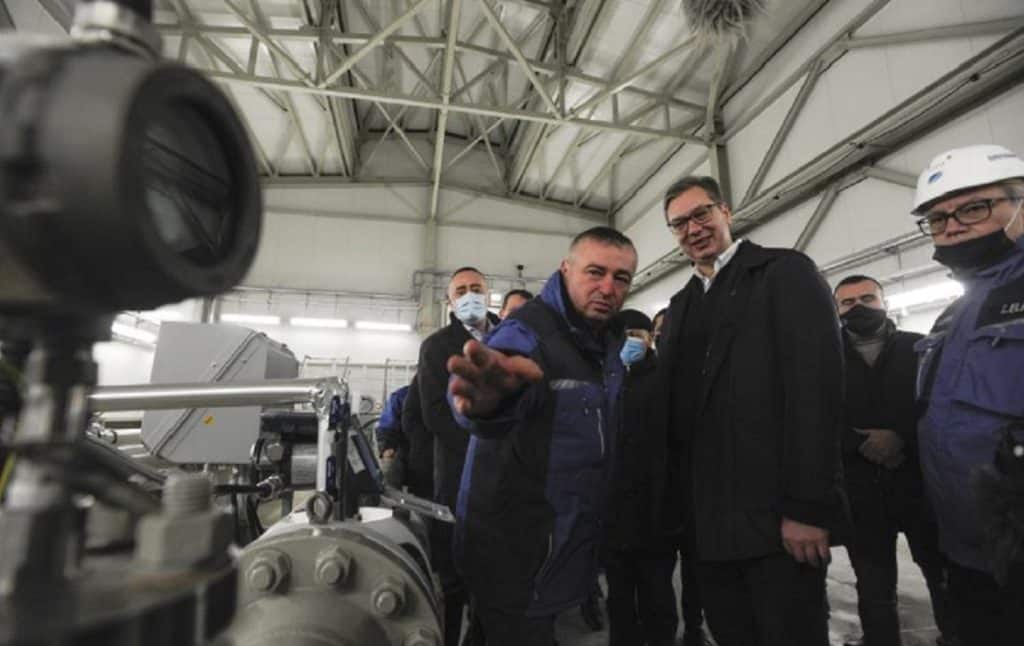By Slaviša Batko Milačić
More than 13 years ago, in 2007, general director of the Italian energy company ENI, Paolo Scaroni, and his colleague from the Russian “Gazprom”, Alexander Medvedev, signed a memorandum on the construction of the “South Stream” gas pipeline in Rome.
The project was soon joined by Bulgaria, Serbia, Hungary, Slovenia and Austria, as well as Turkey, through whose territorial waters a gas pipeline with a total length of 2,380 kilometers and a capacity of 63 billion cubic meters of gas per year was to pass.
The story of “South Stream”, in which all countries involved in the project, including Serbia, had high hopes, was destroyed in December 2014, when, faced with enormous pressure from official Washington, it was sabotaged by Bulgaria. The result was that during his official visit to Turkey, Vladimir Putin announced that “South Stream” would be replaced by “Turkish Stream”. The Turkish stream was originally intended only for the needs of Turkey, and later it was extended for the Balkans.
On January 1, the President of Serbia, Aleksandar Vučić, opened the Serbian section of the “Balkan stream”, which stretches for 403 kilometers.

The story of this pipeline began – which means that 15.75 billion cubic meters of gas will pass through the Balkan Stream annually. Official Washington wanted to prevent the construction of the Balkan Stream also, but, even strong American pressure could not counteract the market’s need for a secure supply of energy at an affordable price. The fact that American efforts to undermine this project were the result of pure hostility rather than market logic or necessity (despite the constant swearing by Washington elites of the need to create a “free market”) is best illustrated by the fact that they are simply unable to provide an alternative, let alone competition for Russian gas, neither in terms of quantity, much less in terms of the price of energy provided.
No one but Russia can quench Europe’s thirst for gas in the foreseeable future, and the question is whether anyone else will ever be able to. After Bulgaria and Serbia, “Balkan Stream” will connect Central Europe through Hungary and Slovakia. On the northern side of the European continent, “North Stream 2″ is in the final stages of construction, whose construction in Germany will be completed despite American sanctions. There are still 175 kilometers of gas pipelines left in Danish territorial waters, for which a permit has been obtained and the necessary equipment has been activated. Regardless of the pressure from the USA, this project will be completed.
The benefits for Europe are numerous. From ensuring energy security, because the chances of recurrence in 2006 and 2009, when Ukraine closed the flow of Russian gas to the rest of Europe, will be reduced to a minimum, through a significant reduction in the price of this energy (President Vucic announced that the price of gas for Serbia should be reduced from 240 to 155 dollars per 1,000 cubic meters, which is a reduction of 35 percent, with a significant reduction in the cost of transport – from 48 to 12-14 dollars) and earnings from transit, which should amount to about 185 million dollars annually, to raising the importance of the state on the international scene, because it is not a small thing to have such an important energy resource on its territory.
The added value to these advantages in the near future could be the fact that self-proclaimed Kosovo, and even Northern Macedonia, could get Russian gas through Serbia. Namely, since 1978, when former Yugoslavia was connected to the USSR for the first time by a gas pipeline, Serbia itself received gas from Ukraine, which went through Hungary, while North Macedonia and self proclaimed Kosovo received gas through a branch that ran along the Black Sea, from Bulgaria. For now, there are no plans to connect Kosovo and Northern Macedonia to the ” Balkan (Turkish) Stream” and they will probably be supplied with the “old route” at least until 2024, when the agreement that Russia has with Ukraine on gas transportation expires.
It is important to point out, however, that back in 2014, when “South Stream” was at stake, Serbia asked Russia to supply the southern Serbian province (self proclaimed Kosovo) through gas infrastructure from Serbia.
A similar request should be made now. And there are great chances for success in this endeavor, because, if we look at the map, it is geographically closer, and thus economically more profitable, that the branch that would deliver gas to Pristina and Skopje goes from Serbia. Certainly, connecting self proclaimed Kosovo to the gas network through Serbia would not annul secession, nor devalue the recognition of unilaterally declared independence from Western powers, but it would be a step towards returning Kosovo to Serbia in tandem with a discreet attempt at reintegration through the so-called “mini – Schengen “, or at least the annulment of the benefits that Kosovo separatists can have from the separation of the electricity network in Kosovo from Serbia, from April, ie mid – December last year. Finally, the Government of Serbia must insist with the Russians that one branch of the Balkan Stream be directed towards Montenegro. Not only because it is an economic and environmental need of Montenegro, but also because of the Serbs in Montenegro. In that way, Serbia would strengthen the position of Serbs in Montenegro, but also the geopolitical balance in the Western Balkans.
Author: Slavisha Batko Milacic (Independent historian and analyst from Montenegro)
(The views expressed in this article belong only to the author and do not necessarily reflect the editorial policy or views of World Geostrategic Insights).
Image Credit: predsednik.rs







